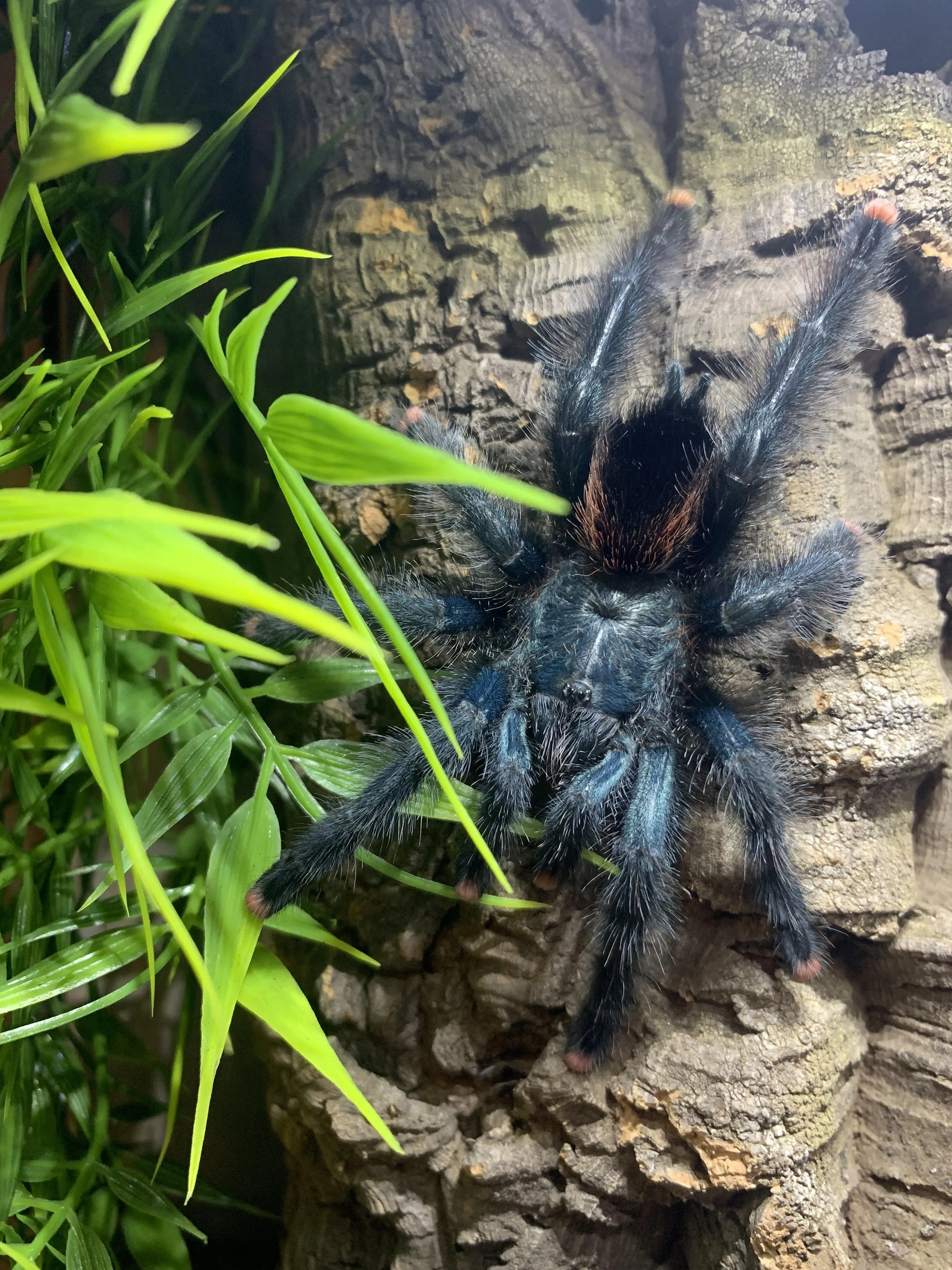Understanding Pink Toe Tarantula Juveniles
The Pink Toe Tarantula (Avicularia avicularia) juvenile stage is a fascinating and crucial period in their development. This guide will provide comprehensive information on how to properly care for these delicate creatures. Understanding their specific needs during this phase ensures their healthy growth and well-being. Juvenile Pink Toes are particularly vulnerable, making appropriate care essential for their survival and development into beautiful adult tarantulas. This care guide aims to equip you with all the necessary knowledge to successfully raise a Pink Toe Tarantula juvenile, covering everything from housing and feeding to handling and health concerns.
Appearance and Characteristics
Pink Toe Tarantula juveniles are easily recognizable by their distinctive features. They typically possess a dark body with pink or reddish coloration on the tips of their legs, hence the name. Their arboreal nature is evident even at a young age, as they exhibit behaviors like webbing and climbing. The size of a juvenile can vary, but they usually range from 0.5 to 2 inches in body length depending on their age and molting stage. Their overall appearance includes a relatively slender body compared to other tarantula species, and their vibrant colors make them a popular choice among tarantula enthusiasts. These characteristics distinguish them from other tarantula species and even older Pink Toes.
Distinguishing Juveniles
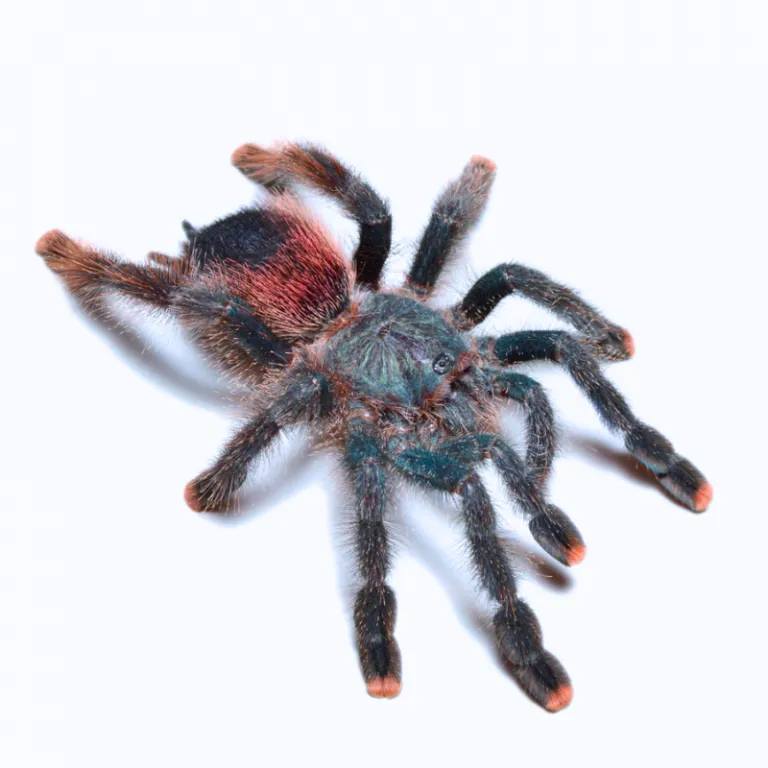
Identifying a juvenile Pink Toe Tarantula is crucial for providing appropriate care. Juveniles are smaller than adults and have a more delicate appearance. Check for the characteristic pink toe pads. Additionally, observe their behavior. Juveniles are typically more active and prone to webbing, often creating elaborate structures within their enclosures. Recognizing these traits helps you distinguish juveniles from sub-adults or adults, tailoring your care accordingly. Regular observation of your tarantula’s size and behavior will aid in identifying its life stage, allowing you to adjust the environment and feeding schedule as needed. Understanding the various stages of growth is critical to provide the best care.
Ideal Housing for Pink Toe Tarantula Juveniles
Proper housing is critical for the health and well-being of a Pink Toe Tarantula juvenile. The enclosure should mimic their natural arboreal habitat, providing them with a sense of security and the space they need to thrive. This includes choosing the right size, providing appropriate substrate and decoration, and maintaining optimal temperature and humidity levels. A well-designed habitat will not only enhance the juvenile’s comfort but will also encourage natural behaviors like webbing and hunting. Correct housing reduces stress, promotes healthy molting, and contributes to the overall health of your tarantula. A comfortable and safe environment is key.
Enclosure Size and Setup
The enclosure size should be appropriate for the juvenile’s size, with a general rule of thumb being a space that is at least three times the tarantula’s leg span in width and length, and twice the leg span in height. A taller enclosure is more important than a wide one for arboreal species like the Pink Toe. A clear, well-ventilated enclosure is ideal, allowing for easy observation and air circulation. Ensure the enclosure has secure ventilation to prevent the build-up of humidity and the growth of mold, which can be detrimental to the tarantula’s health. A lid that secures tightly is also essential to prevent escape. Avoid setups that are too large, which can make it difficult for the juvenile to find food and feel secure, increasing stress.
Substrate and Decoration
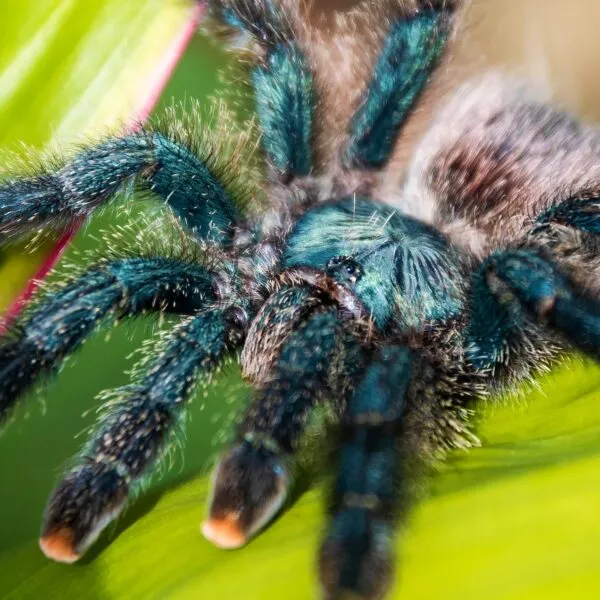
The substrate should be a few inches deep and able to retain some moisture without becoming overly saturated. Suitable options include a mix of coco fiber, peat moss, and vermiculite. This type of substrate helps maintain the required humidity levels, which is essential for Pink Toe Tarantulas. Provide ample decorations, such as cork bark, branches, and artificial or live plants, to create a natural and secure environment. These decorations allow the tarantula to climb and web, providing enrichment and a sense of security. Ensure that all decorations are safe and free from sharp edges that could harm the tarantula. This setup also aids in the molting process, giving the tarantula something to grip onto during molting.
Temperature and Humidity
Maintain a temperature range of 75-80°F (24-27°C) using a heat lamp or heat pad if necessary, ensuring the tarantula does not overheat. Humidity should be kept between 70-80%, which can be achieved by lightly misting the enclosure every few days and ensuring proper ventilation. Regularly monitor the temperature and humidity levels with a thermometer and hygrometer to make adjustments as needed. Proper temperature and humidity levels are crucial for the tarantula’s well-being and successful molting. Consistent monitoring helps maintain the ideal conditions necessary for your Pink Toe Tarantula juvenile to thrive.
Feeding Pink Toe Tarantula Juveniles
Feeding your Pink Toe Tarantula juvenile is an important part of its care routine. Providing the correct diet and frequency ensures the tarantula grows and develops healthily. These tarantulas are opportunistic feeders and require a steady supply of food to thrive. Understanding their dietary needs and adjusting the feeding schedule as they grow will help ensure your juvenile tarantula receives the nutrients it requires. Proper feeding practices also help maintain a healthy and active tarantula.
Diet and Food Frequency
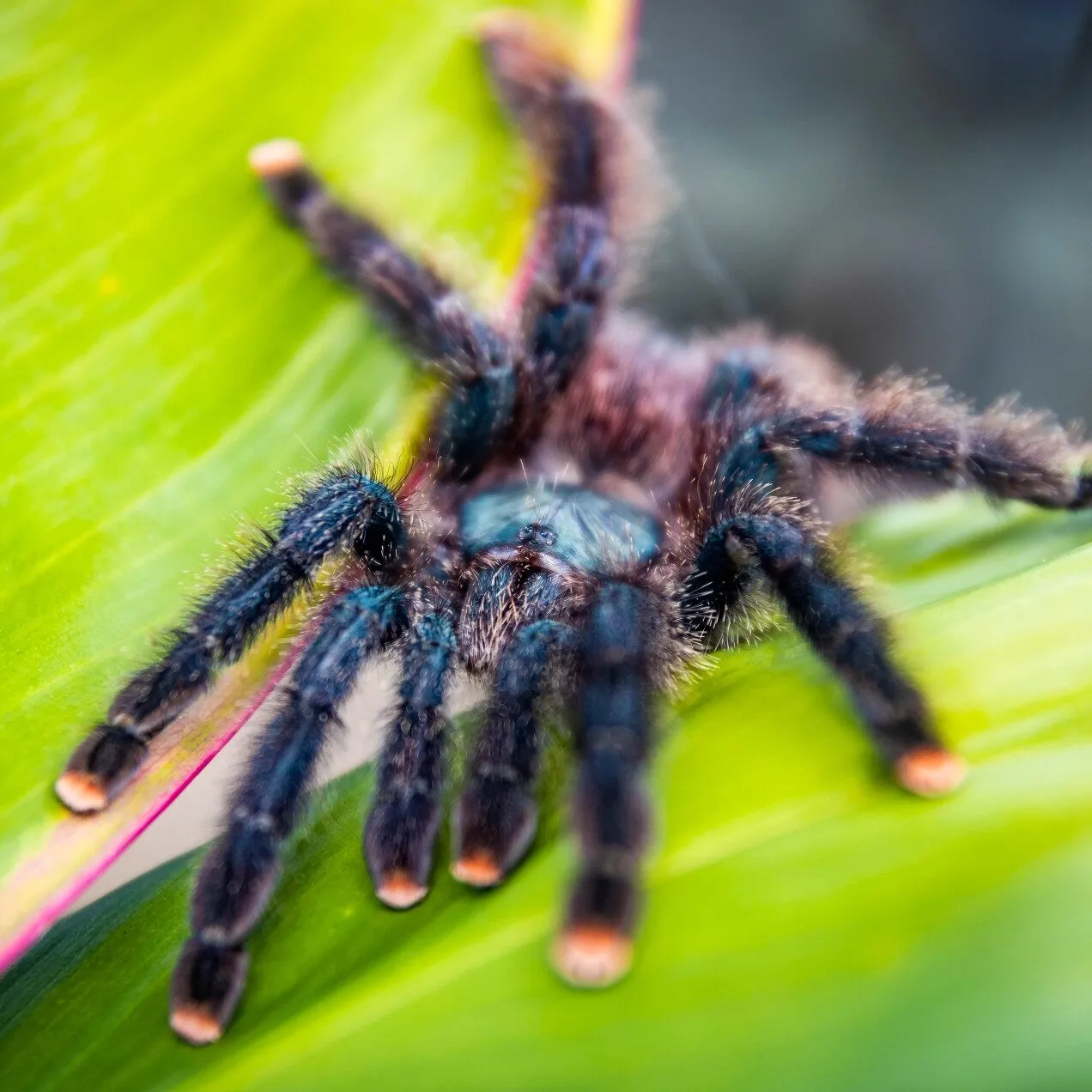
The primary diet for a Pink Toe Tarantula juvenile consists of appropriately sized insects. Good choices include crickets, small roaches, and fruit flies. The size of the prey should be no larger than the tarantula’s body size. Feed the juvenile every 2-3 days, adjusting the frequency based on its appetite and growth rate. Observe the tarantula’s abdomen; a well-fed tarantula will have a plump abdomen. Avoid overfeeding, as this can lead to health issues. Remove any uneaten food within 24 hours to prevent mold and mites from developing in the enclosure. Regularly assess the tarantula’s condition and adjust feeding accordingly.
Watering and Hydration
Providing access to fresh water is crucial for hydration. Offer water in a shallow dish or use a water gel. Ensure the water dish is shallow to prevent the tarantula from drowning. Mist the enclosure lightly every few days to maintain humidity, allowing the tarantula to drink water droplets that form on the enclosure walls or decorations. Regularly check the water source and refill or clean as needed. Clean water is essential for preventing dehydration and ensuring overall well-being. Providing clean water is a simple yet critical aspect of proper tarantula care.
Handling and Safety
Handling Pink Toe Tarantula juveniles should be approached with caution. While they are generally not as aggressive as some other species, they can still bite if they feel threatened. Furthermore, their small size makes them more fragile. Prioritizing safety and understanding their behavior is essential for ensuring a positive experience for both you and the tarantula. Handling should be minimized, and only attempted when necessary. Being informed about their potential defensive behaviors is important.
When to Handle
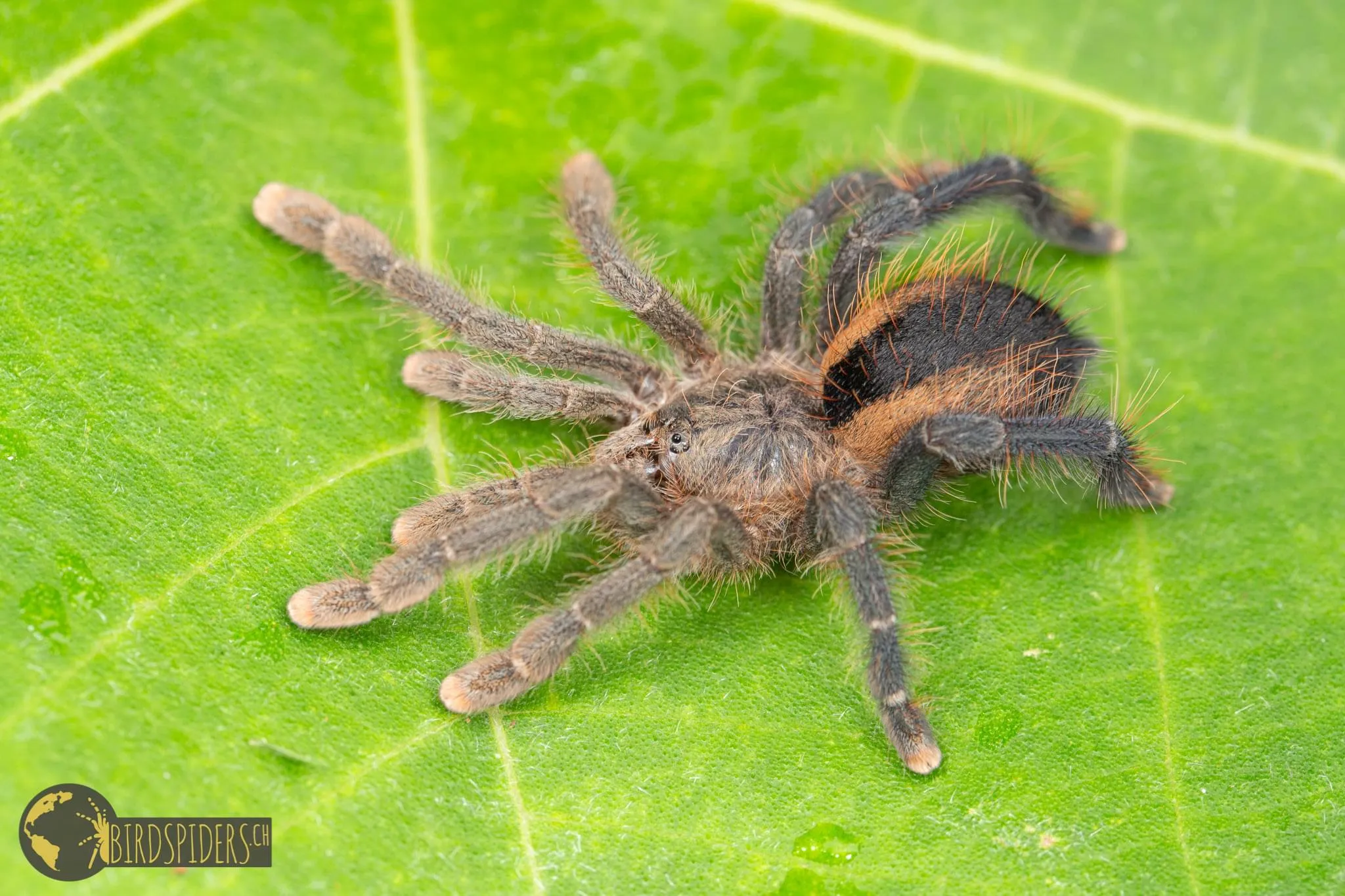
Handling Pink Toe Tarantula juveniles should be kept to a minimum. They are not animals that enjoy being handled and can become stressed. Avoid handling unless absolutely necessary, such as when moving the tarantula to a new enclosure or during health checks. Before handling, observe the tarantula’s behavior; if it appears defensive or stressed, it is best to avoid handling. If handling is unavoidable, do so in a safe and controlled environment, such as over a soft surface, to prevent injury if the tarantula were to fall.
Safety Precautions
Always wash your hands thoroughly before and after handling your tarantula. When handling, move slowly and gently, avoiding sudden movements that could startle the tarantula. Be aware that Pink Toe Tarantulas can be fast and may attempt to escape. If bitten, while not deadly, the bite can be painful and cause localized swelling. Keep a safe distance from the tarantula’s fangs. Never handle a tarantula if you are unsure of its temperament. Educate yourself on the species’ behavior before attempting to handle one. Always supervise children when near the tarantula’s enclosure.
Common Health Issues
Like all animals, Pink Toe Tarantulas can experience health issues. Knowing how to identify and address common problems will help ensure your juvenile’s well-being. Regular observation and a proactive approach to health care are essential for identifying potential issues early. Some common health issues include problems with molting, mite infestations, and injuries. Proper care and a clean environment are the best defenses against these potential problems.
Molting Process
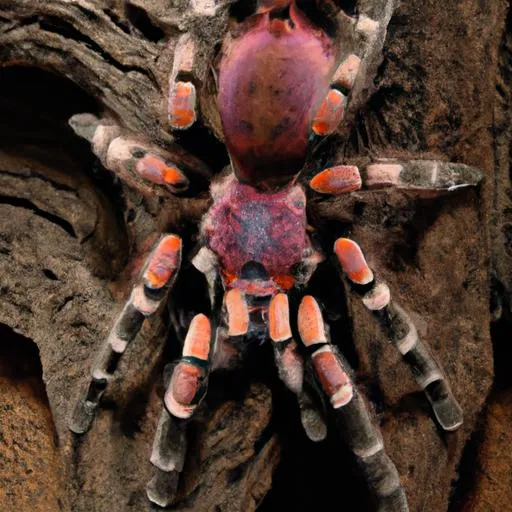
Molting is a natural process where the tarantula sheds its exoskeleton to grow. Juveniles molt more frequently than adults. Signs that a tarantula is about to molt include loss of appetite, lethargy, and the tarantula may seal itself off in a webbed retreat. During the molting process, do not disturb the tarantula and maintain the enclosure’s humidity. After molting, the tarantula will be vulnerable, so avoid feeding it for a few days until its new exoskeleton hardens. Providing a safe, stable environment during molting is essential for a healthy outcome. Ensure the humidity levels are correct to prevent the tarantula from having difficulties molting.
Recognizing and Addressing Problems
Regularly inspect your Pink Toe Tarantula juvenile for signs of illness, such as loss of appetite, lethargy, or unusual behavior. Other signs to watch for include mites, which appear as tiny moving dots, or mold in the enclosure. If you notice any health issues, isolate the tarantula if necessary and consult with a veterinarian or experienced tarantula keeper for advice. Maintaining a clean enclosure and providing appropriate environmental conditions are crucial for preventing health problems. Early detection and prompt action are key to addressing any health concerns effectively and ensuring a healthy juvenile tarantula.
Conclusion
Caring for a Pink Toe Tarantula juvenile is a rewarding experience. By providing a suitable habitat, appropriate diet, and maintaining a safe environment, you can ensure your juvenile tarantula thrives. Remember to handle your tarantula with care and minimize unnecessary interaction. Understanding their needs and addressing any potential health concerns promptly will contribute to a long and healthy life for your Pink Toe Tarantula. With the right knowledge and care, you can enjoy the fascinating life of these beautiful creatures. Enjoy the journey of raising your Pink Toe Tarantula juvenile, and watch it grow into a magnificent adult.
